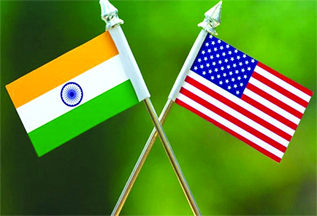
New Delhi (TIP)- In a key decision, the Reserve Bank of India on Friday, October 6, decided to leave its benchmark repo rate unchanged for the fourth straight time, keeping it at 6.5%, while maintaining that it was focussed on a “withdrawal of accommodation” to tame inflation. Speaking on the decision, RBI Governor Shaktikanta Das said “recurring large overlapping food price shocks can impart generalisation and persistence to headline inflation”, a warning that elevated food prices could spill over to other sectors and inflation could become sticky, about which the central banker would remain watchful.
The RBI’s monetary policy broadly remains pivoted on “withdrawal of accommodation”, the governor said, meaning the RBI will be focussed on curbing money supply in the economy to control inflationary pressure. Vegetable prices eased in August and will come down further in September (figures will be released in a week), he said.
Das said a declining outlook for core inflation (inflation that excludes volatile food and fuel prices) was a “silver lining” but overall inflation still faces risks from a decline in kharif or summer sowing, hinting at continued higher food prices. The global economy is still in a slowdown, RBI Governor Shaktikanta Das warned.
The RBI said it expected India’s economy to attain a real GDP growth of 6.5% in 2023-24. In July-September 2023, Asia’s third largest economy is estimated to grow at 6.5%, it said. The economy will expand 6% in October-December 2023 and 5.7% in January-March 2024, the central bank’s projections on Friday showed.
High cereal prices and the threat of El Nino, a weather pattern whose effects ripple around the globe, continue to key be variables to watch that can alter the course of inflation.
The central bank had hiked the repo rate by 250 basis points to 6.5% between May 2022 and February 2023, the RBI hit a pause in the April review of the monetary policy. A basis point is one-hundredth of a percentage point. The repo rate refers to the rate at which commercial banks borrow money by selling their securities to the Reserve Bank, while the reverse repo rate is the rate at which the central bank borrows money.
These rates are key to boosting credit and investments by businesses to boost economy growth. A hike makes borrowing expensive for businesses, limiting money supply and cooling inflation – the key objective of why banks hike benchmark rates.
The RBI kept its retail inflation forecast unchanged and sees it averaging 5.4 per cent in the financial year 2023-24. The central bank decided to keep the policy rate unchanged for the fourth time in a row as it maintains a tight vigil on inflation.
Announcing the bi-monthly monetary policy on Friday, RBI governor Shaktikanta Das said the Monetary Policy Committee (MPC) unanimously decided to keep the repo rate unchanged at 6.5 per cent. It has raised rates by 250 basis points (bps) since May 2022 in a bid to cool surging prices. Source: HT





Be the first to comment